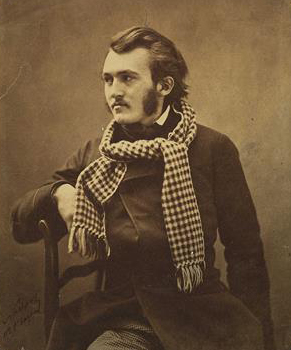During the Museums and the Web 2019 conference, we, along with Sara Goss and Rachel Clark from the Michigan History Center, presented the workshop “To Blog or Not to Blog? It Shouldn’t Be a Question: How to Share More of Your Museum’s Stories Regardless of Team Size.” This workshop gave examples that demonstrate best blogging practices, and Sara and Rachel shared how they use their blog to extend their museum’s reach, as well as discussed how having an active blog provides benefits to their institution.
If you’re questioning whether it’s time for your museum to add blogging to your content strategy and aren’t sure where to start, here are a few common questions we’ve heard about museum blogs over the years.
Does a museum’s blog really matter?
The short answer: Absolutely. The less-short answer: The purpose of your website is not to just share the museum’s hours of operation. Most museums have missions that focus on engaging and inspiring visitors in one form or another, and what better space to do this than the blank canvas that is your blog?
And outside of this aspirational, potentially mission-fulfilling purpose of a museum’s blog, creating and sharing content regularly has a functional purpose. Not only do the stories and posts provide interesting insights into the museum’s collection, programs, and resources, but they create a deep well of content that will continue to draw search engine traffic to your site. Though your homepage will always see the most traffic compared to other pages on your site, if you add up all traffic from the interior pages of your site, you’d likely see that the number of visits to all of those less-popular pages greatly outnumbers the visits to your homepage. Called the Long-Tail Effect, one of the many benefits of creating blog content is that over time it lengthens the “tail” of your website content, and leads to more opportunities for visitors to engage with your institution on a deeper level.
Is it possible to have a blog without calling it “blog”?
Your website features content that staff have spent years researching, writing, and refining for our museum, and the word “blog” doesn’t fit with those scholarly forms of content, and we understand your concern. For many museums, the content you typically produce is elevated above the stereotypical image of a blogger posting short articles online about their personal life. As we’ve mentioned before, the word “blog” doesn’t do enough to convey the diversity of stories contained within your collection, and the pronunciation of the word blog isn’t far away from sounding like “blah.” And the stories you have to tell are far more than just blah.
While we’ve suggested a number of potential words that can replace the word blog itself, you can also find a number of examples from other museums’ blogs. One great example comes from the North Carolina Museum of Art. Their blog, named Circa, was born of a desire to share perspectives from anyone across the museum; from stories that were left on the cutting-room floor of their magazine publication, to a security guard wanting to share their thoughts on a piece. With the name Circa, a visitor to the site gets the idea that the content they can find there will be expansive, covering many topics, but still meets the museum’s high standard they are familiar with.
In fact, your blog doesn’t even have to look like a blog. Looking at standout blogs from hundreds of museums, we identified four attributes that most successful museum blogs share: format, theme, cross-linking, and schedule. The first two attributes, format and theme, really are up to each museum to decide. Though something like the content management system your website runs on may have a small influencing factor on format, you can follow the example of a number of museums like The Getty or Wellcome Collection and create a blog that feels more like a magazine with their unique names and higher editorial standards.
How can we make sure the blogs we publish truly reflect us as an institution? Not just our brand, but our voice as well?
Ah, one of the terrifying questions of the internet age: what is our online voice? Trying to pin down the voice of an institution you yourself are a part of can be tricky. It’s very common for people within an institution to be too in the weeds to get a good grasp on the who, what and why of your online voice. You can get back to the 10,000-foot view of your voice by looking not at your institution, but at your audience.
By looking at your institution from the perspective of your audience, you’ll find it much easier to answer the who/what/why questions. In conversations with Adrienne Clark from the Museum of Pop Culture (MoPOP), she outlined her approach to writing in the voice of MoPOP as thinking of it as being a “fan of fans.” Speaking on the podcast, Adrienne mentions “…my personal rule of thumb working here is that we don’t yuck anyone’s yum. We’re constantly positive — almost a little breathless.”
Adrienne goes on to discuss that when starting out with blogging, make sure to know your “angle.” Take time to figure out the different forms of content, even structures of posts—i.e., do you want long-form posts, or something shorter and image-rich?—that do and don’t work for your institution. Answer the who/what/why by looking at it from your audience’s perspective, but then write, test, and shape your content over time. Don’t let the fear of not having a perfect institutional voice at the outset stop your institution’s blog from ever leaving the starting line.
In looking to add blogging to our overall content strategy, how can we start a publishing schedule?
Sometimes the hardest part of creating your own content publishing schedule is working around the pressure caused by starting from a completely blank slate. This pressure can be alleviated in part by creating and sticking to a content calendar. In content strategy consultations with clients, we’ve created a simple formula for building and maintaining good blogging habits as part of your overall content strategy. The formula requires that you identify three key pieces that can then be used to build your calendar: audience(s), voice(s), and theme(s).
Another pressure we’ve found in working with clients looking to start a blog is that many museums often suffer not from a lack of stories, but instead from such an overwhelming plethora of objects and stories it becomes difficult to pick a single one to write about. Creating a basic content calendar with a specific and small set of themes to choose from will narrow the funnel of content topics and help you avoid choice paralysis. Tess Colwell of the Brooklyn Historical Society, focuses her institution’s blog by posting regularly under the theme of “Photo of the Week.” This theme is flexible in connection to the collection, and can be influenced by historians within the museum and local news events, but having one set theme ensures that there will always be something to focus the blog on and guarantees one post each week.
So, the short answer: if you haven’t already, you should definitely be thinking about creating a blog for your institution.










